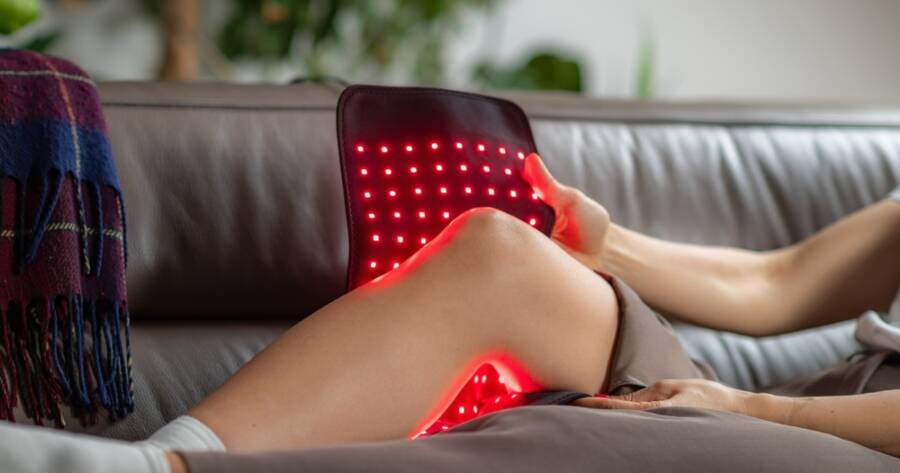Biohacking might sound like something straight out of a science fiction film, but in reality, it’s about using simple tools and strategies to improve how your body and brain perform. From better sleep to sharper focus, today’s biohacking devices are designed to help you feel your best without overhauling your entire lifestyle. For people looking to optimize wellness, understand five beginner-friendly devices that can easily fit into your daily routine — no lab coat required.
1. Wearable Sleep Trackers: Know Your Patterns, Improve Your Rest
Sleep is the foundation of physical and mental health, yet many people struggle to get enough of it or don’t understand the quality of the sleep they are getting. That’s where wearable sleep trackers come in. Devices like rings, wristbands, or headbands collect data while you sleep, showing you patterns in your heart rate, breathing, and movement.
By reviewing this data, you can see how long you spend in each sleep stage, how often you wake up, and what might be affecting your rest. Some devices even suggest improvements, such as adjusting your bedtime or creating a wind-down routine.
Wearing a sleep tracker is passive — you don’t need to do anything but wear it — and over time, the insights can help you create lasting changes that improve both sleep quality and daytime energy.
2. Red Light Therapy Devices: Support Recovery and Mood
Red light therapy has become a popular biohacking tool for good reason. These devices use specific wavelengths of red and near-infrared light to stimulate energy production at the cellular level. The result? Faster muscle recovery, improved skin health, and in some cases, better mood regulation.
Most red light therapy devices are panels, wands, or wearable wraps that can be used for just 10 to 20 minutes a day. Simply sitting in front of the light or placing it over a sore muscle can trigger benefits without any side effects.
People who use red light therapy regularly often notice that it becomes a relaxing part of their morning or evening routine — like a personal spa session that helps their body recharge.
3. PEMF Mats: Recharge Your Body at the Cellular Level
Pulsed Electromagnetic Field (PEMF) therapy uses low-level electromagnetic waves to stimulate the body’s natural recovery process. PEMF mats are soft mats you lie on, usually for 10 to 30 minutes, and they help promote circulation, reduce inflammation, and ease tension.
Unlike high-tech machines that require complex setup, most PEMF mats are as easy to use as an electric blanket. You simply choose the intensity and lie back. People often pair PEMF use with meditation, stretching, or breathwork to get more out of each session.
Physiotherapists and wellness practitioners have used this technology for years, and now it’s accessible for home use. Whether you’re dealing with daily stress or muscle fatigue, a PEMF mat is a passive yet powerful way to support your well-being.
4. Cold Therapy Devices: Boost Resilience and Recovery
Cold therapy has long been used by athletes to reduce inflammation and speed recovery, but now everyday users are turning to it for its cognitive and emotional benefits. Portable cold therapy devices — like ice packs, cold plunges, or even handheld cryotherapy tools — deliver a jolt to the nervous system that can improve alertness and build stress tolerance.
Daily exposure to cold (even in small doses) can increase dopamine levels and reduce anxiety. While full-body cold plunges require space and commitment, smaller tools like facial rollers or ice baths for hands and feet can be just as effective in routine use.
The key is consistency and comfort. Starting with short sessions — even just 30 seconds — can help build your body’s ability to adapt, which is a central theme in biohacking.
5. Smart Nutrition Scanners: Learn What Your Body Needs
Some newer devices use light or sensors to scan the skin, measure hydration levels, or estimate vitamin intake. While still in early stages of development, many biohackers use smart nutrition tools to personalize their diets more accurately.
Others rely on blood glucose monitors or ketone breath analyzers to fine-tune what foods work best for their body. These devices offer real-time feedback, which helps people adjust their meals to stabilize energy, reduce brain fog, or support fat metabolism.
Even simple food journaling apps that sync with wearables can be considered nutrition biohacking when used thoughtfully. The goal isn’t perfection — it’s awareness and small, informed shifts over time.
Your Biohacking Routine Starts Here
Biohacking doesn’t have to be extreme or expensive. With the right devices, you can learn more about how your body works and start making smarter choices each day. Whether you’re tracking your sleep, supporting recovery with red light, or experimenting with cold exposure, the key is to stay curious and consistent.
These five devices are designed to slide easily into your life, offering support without adding stress. Over time, they can help you build a routine that’s not just healthier — but more in tune with how you want to feel.

